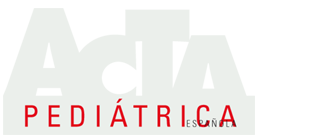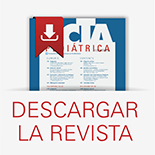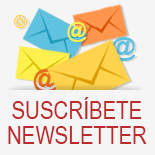Volumen 64 - Número 9 - Octubre 2006
Publicado en
Originales
Proyecto FIND. Resultados del primer año de trabajo en la detección precoz de las mucopolisacaridosis
The FIND project, first year’s results for mucopolysaccharidosis early detection
C. Colón Mejeras, J.V. Álvarez González, M.L. Couce PicoUnidade de Diagnóstico e Tratamento das Enfermidades Conxénitas do Metabolismo. Xerencia de Xestión Integrada de Santiago de Compostela. IDIS. Santiago de Compostela (A Coruña)














